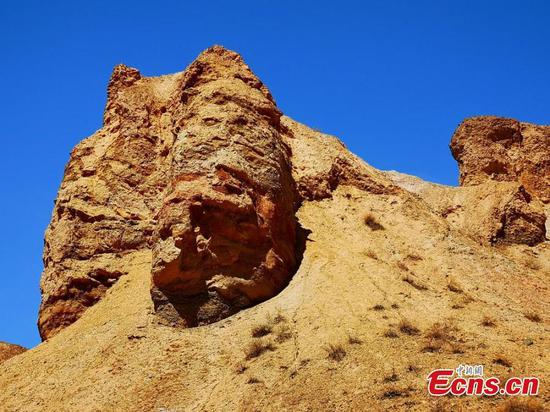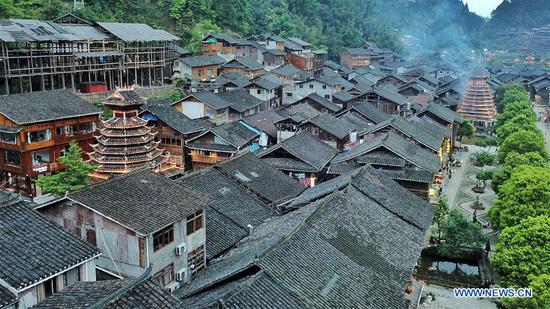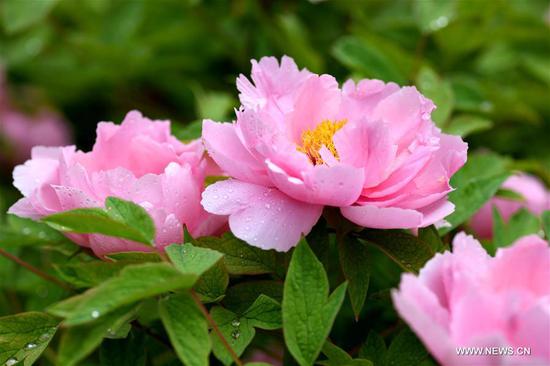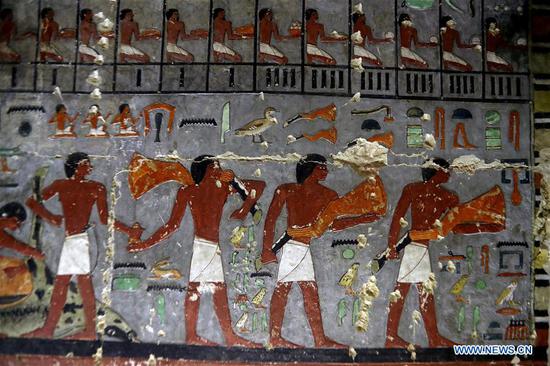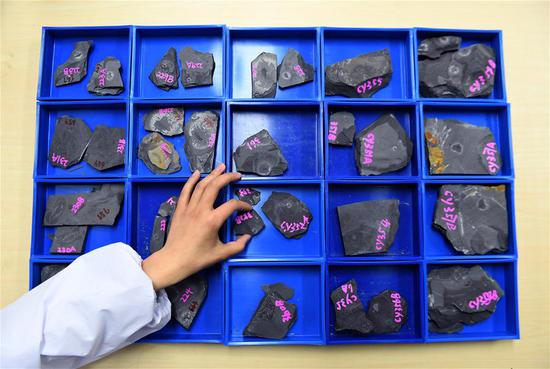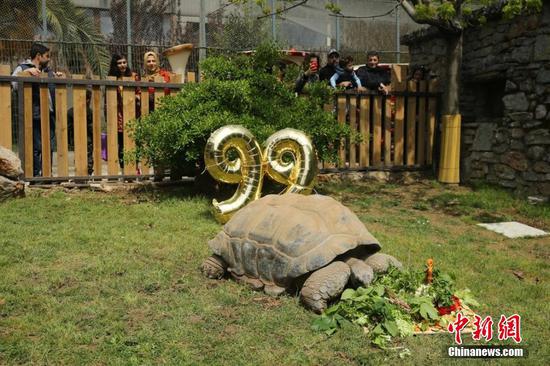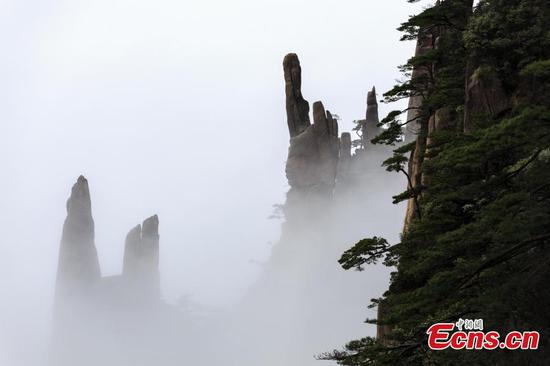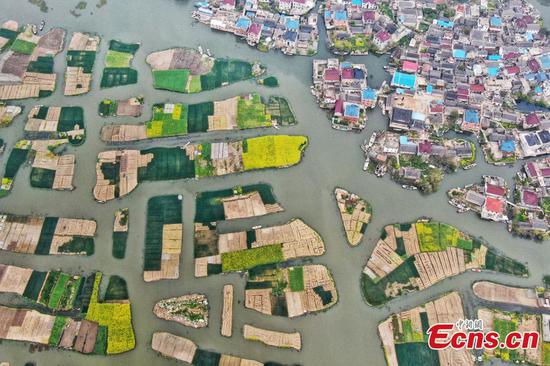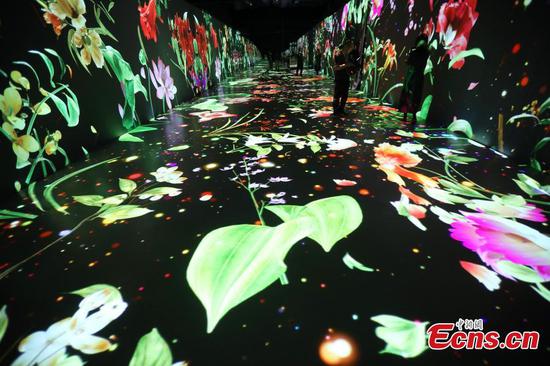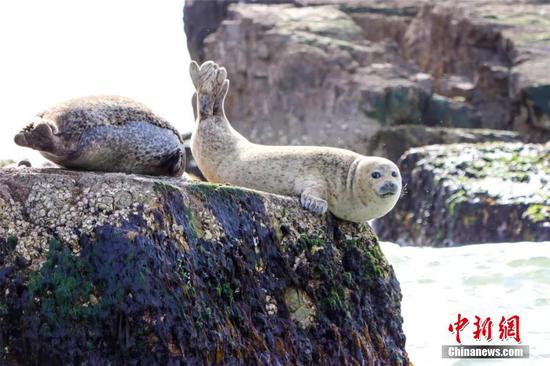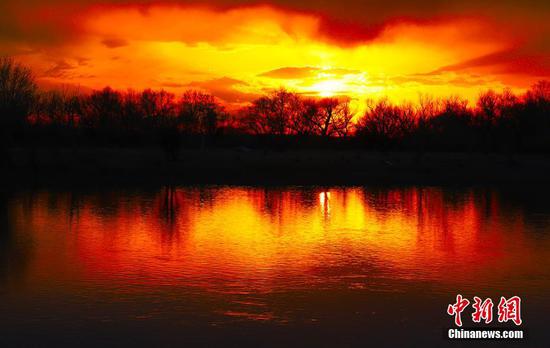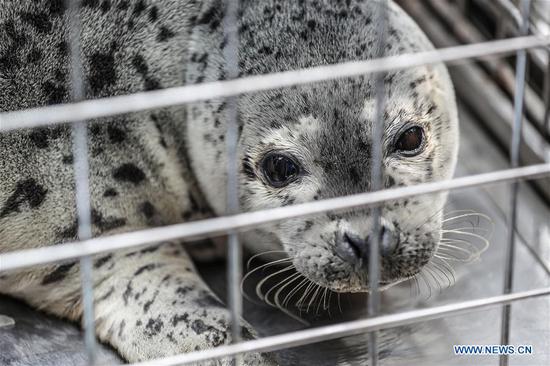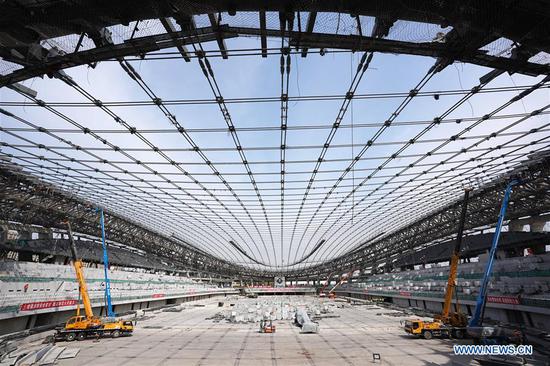
A bird's-eye view of the Yellow River Delta Natural Reserve in Dongying, Shandong Province. (PHOTO/XINHUA)
Steps taken to battle encroachment by sea caused by reduced flow, drop in silt
Dongying, where the Yellow River flows into Bohai Bay in Shandong province, may be the fastest-growing city in the world.
Silt deposits from the river, in which 1 cubic meter of water can carry as much as 1.7 metric tons of the material, have increased the city's land area by 20 to 35 square kilometers annually.
The city's land and surrounding areas, which cover 6,000 to 7,000 sq km, were formed over the course of hundreds of millions of years from deposits carried by the Yellow River from the Loess Plateau, about 1,000 km away.
Yet the highly reduced levels of water and silt flowing in the river led to the sea encroaching on its estuary in the 1990s.
Zhu Shuyu, a wetland researcher at the Yellow River Delta Natural Reserve Administrative Bureau in Dongying, recalled the days when she arrived in the delta area after leaving college in 1993.
"In the mid-1990s, the river dried up for 100 days on average every year. This led to severe deterioration of the delta environment. Wetlands in the river estuary shrank by a large margin, and large numbers of birds and fish died," Zhu said.
Conditions started to change in 2002, when the Yellow River Conservancy Commission began to use the Xiaolangdi Hydro Power Project on the middle reaches of the river in Jiyuan county, Henan province, to regulate the river flow by storing floodwater to be released in drought seasons.
The project, which was completed in 2001, comprises a 12.65 billion-cubic-meter dam and a reservoir behind it.
Dykes were built in the river estuary wetland to conserve water, helping to restore surface runoff and supplementing groundwater supplies, enabling the gradual restoration of the wetland ecological system.
Since 2002, about 23,333 hectares of degraded wetland have been restored, the number of bird species living in the delta wetland has risen from 283 to 368 and the bird population has reached 3 million to 4 million.
"The Oriental white stork, a rare migratory bird species, did not breed in the delta before. Now they settle here. Since the first Oriental white stork came here in 2005, about 1,200 have been born in the delta wetland," Zhu said.
Guo Jiansan, a bird watcher from Dongying, said, "Spring and autumn are the two seasons for bird lovers in Dongying, as millions of migratory birds pass through the Yellow River Delta wetland, providing us with a golden opportunity to observe them."
Tourists from China and overseas make some 20 million trips to Dongying every year, and the wetland is a must-see spot on their itineraries. The Dongying city government estimates the wetland brings in about 17.6 billion yuan ($2.62 billion) in tourism revenue annually.
The water in the Yellow River also makes it possible for farmers to plant crops that generate more income.
Since 2002, Yang Shijian, a farmer in Luojiawuzi village on the river estuary, has planted rice on 187 hectares of land, which he sells to dozens of cities nationwide. He has increased his annual income from about 30,000 yuan to hundreds of thousands of yuan. "The Yellow River's water is the source of wealth," Yang said.













